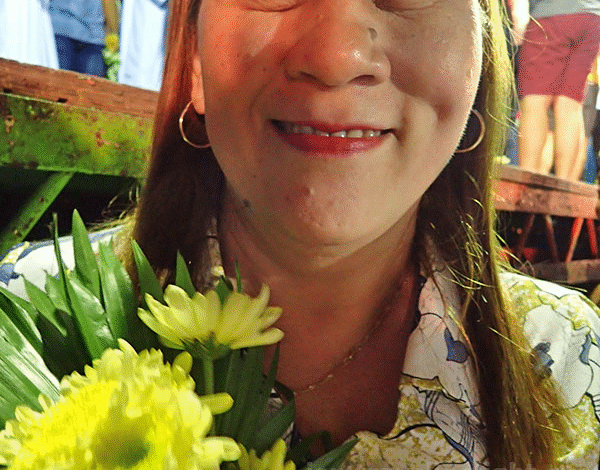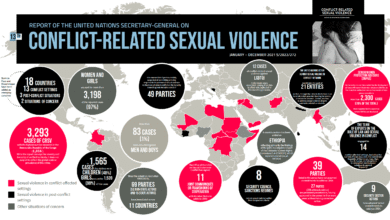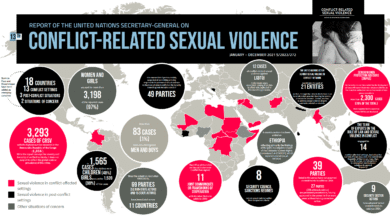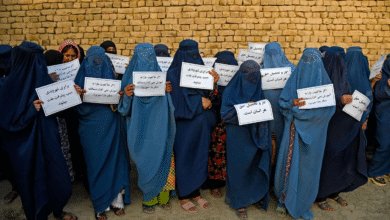Women in Sasmuan Revive Watersheds and Livelihoods

Women in Sasmuan play a vital role in the coastal community of this thriving Philippine town, embodying resilience and adaptability amidst changing environmental conditions. These women not only contribute to the local economy through fishing and crafting but also lead efforts in women empowerment and sustainable livelihoods. As caretakers of both their families and the ecosystems around them, they are crucial to initiatives focused on watershed management and community health. The challenges they face, such as diminishing fish stocks and pollution, have sparked a movement towards innovative solutions that secure their future. By integrating sustainable practices, these local heroes are transforming Sasmuan into a beacon of hope for coastal communities everywhere.
In the bustling coastal town of Sasmuan, situated in the Philippines, female residents are at the forefront of economic and environmental revitalization efforts. These women are not only engaging in traditional fishing practices but are also spearheading initiatives that promote sustainable development and enhance community resilience. With a strong focus on nurturing their livelihoods and managing local watersheds, they are paving the way for generations to come. By embracing innovative approaches and diversifying their sources of income, the women of Sasmuan are setting an example of empowerment and sustainability in coastal regions, demonstrating the significant impact women can have in driving change.
Empowering Women in Sasmuan for Sustainable Livelihoods
In Sasmuan, the empowerment of women is more than a goal; it is a necessity for the survival of their coastal communities. Women like Christina Guevarra and Edna Bilacog are at the forefront of transforming their livelihoods through sustainable practices. As primary caretakers of their families and natural resources, they are redefining the traditional roles by engaging in income-generating activities that not only support their households but also contribute to the community’s economic fabric. By fostering women empowerment in Sasmuan, these women are not just participants in their local economy; they are leaders in sustainable development initiatives that ensure a brighter future for the next generation.
Furthermore, the integration of women into programs focused on watershed management and environmental preservation has proven impactful. Local organizations, backed by the UN, are providing training and resources that enable women in Sasmuan to innovate and manage their livelihoods responsibly. Introducing practices such as waste sorting and sustainable fishing not only enhances their economic stability but also promotes environmental stewardship, highlighting the interconnectedness of women’s empowerment and ecological health.
The collaborative efforts to uplift women in Sasmuan resonate throughout the community, strengthening social ties and building resilience against economic and environmental shocks. For instance, initiatives that showcase the weaving skills of women like Maricar Guevarra have created opportunities for income diversification and the preservation of local crafts. These women are not merely restoring their economic balance but also empowering each other through shared knowledge and support networks, ultimately fostering a sense of agency that transcends traditional gender roles.
As they navigate the challenges posed by climate change and unsustainable practices, women in Sasmuan exemplify resilience. They craft sustainable business ventures from local resources, ensuring that every action contributes to the health of their coastal ecosystem. In this way, women’s empowerment acts as a catalyst for sustainable livelihoods, making it imperative to recognize and support their roles within these critical initiatives.
Sustainable Practices in Sasmuan’s Coastal Communities
Sasmuan’s coastal communities face various challenges arising from environmental degradation and economic instability. The Integrated River Basin Management (IRBM) Project serves as a beacon of hope by promoting sustainable practices that rejuvenate both the wetlands and the livelihoods dependent on them. By combining effective watershed management with community initiatives, Sasmuan is leading the way toward sustainability in the Philippines. Programs that engage local women in waste management and the preservation of biodiversity highlight the integral role that sustainable practices play in strengthening their resilience.
Additionally, community-led conservation efforts have become essential in maintaining the integrity of the coastal ecosystem. Residents are encouraged to participate in clean-up drives and sustainable fishing practices, helping to mitigate the effects of pollution and overfishing. This collaborative approach empowers local stakeholders and builds a culture of environmental responsibility, crucial for the long-term health of Sasmuan’s communities and the surrounding waters.
Furthermore, the integration of education around sustainable practices within the community schools fosters a new generation that understands the importance of ecological preservation. When children learn about the connection between their daily activities and the health of their environment, they become advocates for change within their families. This paradigm shift towards sustainability not only benefits the coastal waters of Sasmuan but also creates a ripple effect across the region, encouraging other communities to adopt similar practices.
Through workshops and outreach programs that focus on sustainable livelihoods, the women of Sasmuan are not only safeguarding their future but also reinforcing the importance of these practices in the local economy. The balance of fishing seasons, waste management, and crafting skills not only preserves their traditions but offers a pathway towards a thriving, sustainable community.
Challenges Facing Women in Sasmuan’s Fishing Industry
Despite the strides made in women empowerment and sustainable practices, significant challenges persist in Sasmuan’s fishing industry. Women like Christina and Edna are faced with the harsh reality of dwindling catch and unpredictable weather patterns exacerbated by climate change. As traditional fishing practices become less viable, many women are left scrambling to find alternative sources of income. The methods employed often yield insufficient returns, putting stress on families trying to make ends meet. This dynamic underscores the need for immediate action to secure better fisheries management and additional economic opportunities for women.
Furthermore, the threat of environmental degradation poses a double jeopardy for the women in Sasmuan. Polluted waters affect fish populations, leading to lower income and increased competition for the remaining resources. The intersection of these challenges illustrates the urgent need for broader policies that prioritize environmental sustainability while also focusing on the well-being of women who play critical roles in the local economy. Without targeted interventions, the future of these communities hangs in the balance.
Moreover, the economic and social impacts of low wages have significant repercussions on the lives of women in the fishing community. Many report that their earnings from activities like waste sorting and traditional crafts barely sustain their families, thus contributing to a cycle of poverty that is difficult to escape. These perpetual economic struggles can lead to feelings of helplessness and diminished motivation within the community. As women work tirelessly to provide for their families, it becomes apparent that without a concerted effort to increase wages and resources, the progress made through empowerment initiatives may be at risk.
Therefore, advocating for fair wages, improved working conditions, and support for local crafts is vital. By amplifying the voices of women in Sasmuan, stakeholders can drive systemic changes that uplift these communities and foster a brighter future! Ensuring that women are given equitable opportunities and access to necessary resources will cultivate a stronger and more resilient fishing industry in Sasmuan.
The Role of Education in Women’s Development in Sasmuan
Education plays a pivotal role in advancing women’s development in Sasmuan, particularly in sustaining livelihoods and promoting environmental stewardship. Programs that focus on imparting knowledge about sustainable practices are crucial for cultivating a generation of women who are equipped to face the challenges of the fishing industry and climate change. By investing in education, the women of Sasmuan can enhance their skills, gain access to new opportunities, and break free from cycles of poverty. Initiatives that support educational outreach provide the women with the tools necessary to become advocates not only for themselves but also for their communities.
Furthermore, education enables women in Sasmuan to harness their potential in various sectors beyond fishing. With support from local governments and NGOs, women can learn entrepreneurial skills, financial literacy, and vocational training, allowing them to diversify their income sources. Educational programs targeted towards women ensure that they remain engaged in the workforce, boosting their confidence while contributing to their families and communities.
As women learn to manage their resources, engage in environmentally-friendly practices, and navigate market opportunities, they transform into role models for future generations. The ripple effect of education empowers young girls in Sasmuan to envision a future where they can pursue their aspirations without the constraints of societal expectations. Programs dedicated to women’s education signal a commitment to advancing gender equality and prioritizing sustainable development—a vital combination for the long-term success of Sasmuan and its coastal communities.
By fostering a culture of learning and support, Sasmuan’s investment in women’s education ensures that the next generation is better equipped to tackle the environmental and economic challenges they face. Ultimately, education is fundamental to redefining women’s roles in society and reinforcing the importance of sustainable practices within their communities.
Innovations in Craft and Trade Among Women in Sasmuan
The women of Sasmuan are not only resilient but also remarkably innovative in their approach to livelihood diversification. With a rich tapestry of traditional crafts and culinary skills, many women are turning to entrepreneurship to augment their income. The production of local delicacies, such as crab paste and atchara, has emerged as a lucrative venture, showcasing the community’s cultural heritage while providing much-needed financial support. Women like Patricia Culala, who has successfully built a business around crab paste, are living proof that creativity and resourcefulness can lead to economic empowerment and sustainability.
Moreover, the resurgence in traditional crafts, much like the weaving practiced by Maricar Guevarra, is a crucial step towards preserving Sasmuan’s cultural identity while ensuring financial independence for women. These craft initiatives not only promote local art but also provide an avenue for women to earn a living in a manner aligned with environmental considerations. Through innovative practices, Sasmuan women are demonstrating their capacity to create sustainable livelihoods that resonate with both their heritage and the current market.
By supporting local craftsmanship and trade, Sasmuan’s women are fostering community development and bolstering the local economy. Initiatives aimed at enhancing the visibility of their products in wider markets contribute to skill development and foster confidence among female artisans. With proper marketing strategies and support from local institutions, these women can reach beyond their immediate community and create a sustainable business network that fuels economic growth.
The convergence of tradition and innovation is a hallmark of women’s entrepreneurship in Sasmuan. As these women navigate the challenges posed by environmental and economic pressures, their ingenuity shines through, offering hope for future sustainability. By promoting fair trade practices and ethical production methods, women in Sasmuan are setting a precedence for preserving both their livelihoods and the coastal ecosystems they depend on.
Community Collaboration for Environmental Conservation in Sasmuan
Community collaboration plays a crucial role in the success of environmental conservation efforts in Sasmuan. The combined efforts of local women, government agencies, and non-governmental organizations are fostering a unified approach to managing the region’s natural resources sustainably. Initiatives such as community clean-up drives and awareness campaigns highlight the importance of preserving the watersheds and coastal zones vital to the livelihoods of local fishers and their families. By actively involving women in these efforts, communities are not only enhancing environmental stewardship but also promoting gender equity and empowerment.
These collaborations have enabled women in Sasmuan to take on leadership roles in conservation activities, which is a significant shift in rural community dynamics. As trained environmental advocates, these women lead awareness initiatives and engage their peers in dialogue about sustainable practices. By harnessing local knowledge and traditional practices, they become instrumental in creating tailored solutions to address environmental challenges within their specific context.
Moreover, the integration of women into community-led environmental initiatives brings fresh perspectives and innovative ideas to the table. Through partnerships with educational institutions and environmental agencies, women in Sasmuan are gaining access to vital training and resources that enhance their capacity to protect local ecosystems. This collaboration strengthens community resilience, helping to combat the negative impacts of climate change while enabling sustainable livelihoods for future generations.
Through collaborative action, Sasmuan’s women exemplify the power of community in fostering environmental conservation. Their efforts not only contribute to the restoration of degraded ecosystems but also facilitate the sustainable management of coastal resources that are essential for their families’ livelihoods. Promoting a community-focused approach to environmental stewardship ensures that Sasmuan thrives economically and ecologically for years to come.
The Future of Sasmuan: Hope for Women and Sustainable Development
Looking toward the future, the prospects for women in Sasmuan appear positively intertwined with the community’s overall development. As they continue to forge pathways toward sustainable livelihoods and environmental resilience, there is a palpable sense of hope within this coastal town. The investments being made in women’s training programs, artisanal crafts, and sustainable practices are paving the way for a transformative economic landscape, where women can thrive alongside their families and communities. As they embrace their roles as custodians of the environment, women in Sasmuan are helping to shape sustainable development that honors both their cultural heritage and their aspirations for the future.
This emerging framework of sustainable development underscores the necessity of ongoing support for women-led initiatives. By prioritizing fair wages, education, and access to markets, the community can ensure that their efforts yield long-lasting benefits. As collaborations between local leaders, organizations, and governmental entities deepen, the potential for growth and transformation expands, bridging the gap between environmental conservation and economic sustainability.
Moreover, a future rich with opportunities for women involves a commitment to advocacy and policy development that addresses systemic barriers head-on. By ensuring that women’s voices are heard in decision-making processes related to resource management and community planning, Sasmuan can cultivate a climate of inclusivity and equity. This commitment is vital as it creates a conducive environment for innovation and sustainable progress, ultimately contributing to the overarching goal of a thriving community that respects both its people and its natural resources.
In conclusion, the tides of change in Sasmuan present a unique opportunity for women to lead the charge towards a sustainable future. With each step taken towards empowerment, education, and environmental stewardship, the women of Sasmuan are not just transforming their lives—they are building a legacy of resilience and hope for generations to come.
Frequently Asked Questions
What role do women in Sasmuan play in community-led watershed management?
Women in Sasmuan actively participate in watershed management through various initiatives aimed at sustainable practices. They engage in activities that help protect the environment, such as cleaning up riverbanks and participating in local governance. Their involvement is crucial for promoting women empowerment and ensuring the sustainable livelihoods of coastal communities.
How are women in Sasmuan contributing to sustainable livelihoods?
Women in Sasmuan are finding innovative ways to create sustainable livelihoods by diversifying their income sources. Many engage in traditional crafts, seafood trade, or even run small businesses, such as making crab paste. These efforts help them maintain economic stability, particularly during off-seasons in the fishing industry.
What challenges do women in Sasmuan face in their livelihoods?
Women in Sasmuan face several challenges, primarily due to dwindling fish populations and environmental degradation caused by pollution and poor waste management. These issues threaten their primary source of income, making it essential for them to adapt to new economic activities to sustain their families.
How can women in Sasmuan’s efforts in watersheds be supported by the community?
Supporting women in Sasmuan involves providing fair wages for their labor, enhancing access to resources, and promoting community-led conservation projects. Additionally, fostering local women’s groups can empower them to share knowledge and skills, thus strengthening their roles in watershed management.
What impact does unsustainable aquaculture have on women in Sasmuan?
Unsustainable aquaculture practices in nearby fishponds pose a threat to the livelihoods of women in Sasmuan who rely on fishing and crab harvesting. This environmental strain can diminish fish stocks and disrupt their income, making it imperative for local communities to adopt sustainable methods to protect their resources.
In what ways are women in Sasmuan leading the crab trade?
Women in Sasmuan are at the forefront of the crab trade, expertly processing and preparing crabs for market. They contribute to the local economy by harvesting crabs and creating value-added products. Their expertise not only enhances their income but also reinforces their leadership roles within coastal communities.
What initiatives are in place to promote women empowerment in Sasmuan?
Initiatives such as the Integrated River Basin Management (IRBM) Project are crucial for promoting women empowerment in Sasmuan. These programs focus on sustainable practices, education, and creating opportunities for women to participate in local economies, particularly through activities related to watershed management.
What is the significance of the women’s group in Batang 2nd, Sasmuan?
The women’s group in Batang 2nd plays a significant role in the community by transforming local resources, such as sea purslane, into marketable products like atchara. This not only creates economic opportunities for the women but also fosters community resilience and sustainable practices in food production.
| Key Point | Details |
|---|---|
| Community Dependence on Waterways | Women in Sasmuan heavily rely on local rivers for fishing and livelihood, facing threats from environmental degradation. |
| Challenges Faced | Pollution, unsustainable fishing practices, and lack of effective waste management hinder their economic stability. |
| Integrated River Basin Management (IRBM) Project | Partnering with local governments and groups to promote sustainable practices and uplift vulnerable communities, especially women. |
| Diverse Livelihoods | Women engage in various income-generating activities from fishing, traditional crafts, and waste management to running small businesses. |
| Future Prospects | Their future remains uncertain without sustainable solutions, fair wages, and effective river management. |
Summary
Women in Sasmuan are at the forefront of reviving local watersheds and preserving their livelihoods amidst environmental challenges. Their resilience and innovation highlight the need for sustainable practices and community support to ensure their economic stability. As they face growing threats from pollution and unsustainable practices, it’s imperative that initiatives like the Integrated River Basin Management Project are supported to help empower these women, preserve biodiversity, and secure a sustainable future for their communities.




